- Home
- Encyclopedia
- Coalbed Methane: Boom, Bust and Hard Lessons
Coalbed Methane: Boom, Bust and Hard Lessons
Today Wyoming’s coal-bed methane gas play in the Powder River Basin is a bust. Few of the 24,000 wells drilled during the heyday of the 2000s produce much gas, many sit idle and approximately 3,000 wells are left orphaned—a liability for the state to clean up.
But in the early part of this century, the fervor surrounding coal-bed methane gas and its potential was as enormous as Powder River Basin coal itself—a trove of mineral wealth lurking just below the surface in coal formations the size of Lake Erie. Coal-bed methane was a play for both big operators and mom-and-pops. It made new millionaires among companies and landowners—not to mention hundreds of millions of dollars for local and state coffers.
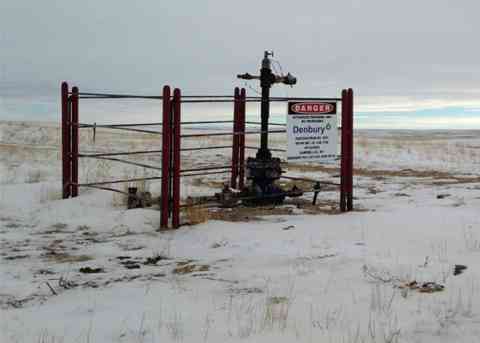
Coal-bed methane also fueled hot controversies in the realms of landowner rights, environmental stewardship, the value of water and—at every turn—state and local politics.
Some blamed the development for harming domestic water wells. One rural homeowner fired shots at a compressor station in rifle range of his house out of frustration at the constant whirring noise. A fistfight nearly broke out on a tour bus in front of elected officials, including then Montana Gov. Judy Martz, who stepped in to cool tempers. One operator said he feared he would be blackballed by his colleagues for putting in a new water well for an elderly couple on the Powder River to replace one that had supposedly been bled dry.
“If a company or an individual involved in trying to help these people with this [replacement] well were named, there would be those who would perceive them as being guilty of something,” Casper geologist Jimmy Goolsby of Goolsby, Finley & Associates, told the Casper Star-Tribune in December 2003.
For a time, coal-bed methane was responsible for making the Powder River Basin the largest producing natural gas field in the state, at more than 1 billion cubic feet of gas per day. During the early 2000s, coal-bed methane was the only big gas play in the state—a godsend for a mineral revenue-dependent state that had endured a long dry spell in the 1990s.
As did so many resource booms before it, Wyoming’s coal-bed methane gas boom burned brightly and then died, leaving a complicated legacy. And, as often is the case, it left lingering hope for a revival, as well as frustrations over lessons that still appear unlearned.
CBM pioneers
Victims of the oil bust of the 1980s, Bruce Martens and Chuck Peck were laid off from Colorado-based Chorney Oil Co. on Friday the 13th, June 1986. Looking for something to do, they formed American Oil and Gas Co. in 1989, headed to Gillette, Wyo., and began buying leases in hopes of some future oil and gas play.

Everyone knew there was some gas in Powder River Basin coal, but nobody knew how much. Natural gas—methane—in the coal was considered more a nuisance than anything. Years earlier gas leaks forced the evacuation of dozens of families in Rawhide Village, a small housing development just north of Gillette and barely a few hundred yards from the Eagle Butte coal mine.
National television crews filmed residents holding cigarette lighters to cracks in the street, igniting methane. Those flames were fueled by methane gas formed in the coal below. It was believed that dewatering of the coal seam ahead of the open-pit mine—along with blasting—helped methane percolate to the surface. Eventually, the neighborhood was almost completely abandoned.
A handful of small oil and gas operators were already tinkering with the idea of producing gas from Powder River Basin coal, including Betop, Inc. and Redstone Gas Partners. Through the early 1990s, Martens and Peck worked closely with a handful of ranchers, focusing on two fields: one south of Gillette and one north of town that was located roughly between Rawhide Village and the Campbell County Airport.
With a lot of gumption and glue, the duo used retooled water well rigs to drill clusters of wells that worked together to lower the water table in the uppermost coal seam, the Wyodak. Initial coal seams targeted were shallow — 500 feet to 1,000 feet—compared to conventional oil and gas wells that target formations 8,000 feet and deeper. At the surface they constructed tanks to separate water from the gas.
Martens and Peck, building on the work of their predecessors, demonstrated the strategy could produce a handsome volume of methane, ready to pipe to market. Eventually, it was a field south of Gillette, the Marquiss Field on a ranch owned by the Ron Lynde family, that was first to pay off.
In the late 1990s, Martens and Peck sold their gas fields for a total of $40 million and set off one of the brightest-burning drilling booms in Wyoming history. Part of coal-bed methane’s appeal in Wyoming was exactly what Martens and Peck had demonstrated: that a couple of laid-off oil industry workers could use wit, brawn, determination and a few water well rigs to make millions.
But for coal-bed methane to become a bona fide play in the Powder River Basin it would need a few players with budgets big enough to drill hundreds of wells and produce enough gas to attract new market-bound pipelines. Big and small players alike rushed into the Powder River Basin to make it happen.
At one point, nearly 100 different operators were drilling coal-bed methane wells in northeast Wyoming. The big players included Anadarko Petroleum Corp., Devon Energy, Williams, Marathon Oil Corp., Pennaco, Barrett Resources Corp. and Western Gas Resources.
Smaller operators included new companies thrown together by out-of-work drillers, welders and local businessmen.
Coal estate vs. oil-and-gas estate
Because much of the coal estate in the Powder River Basin is owned by the federal government, a huge legal question loomed. Was the methane gas that resides in the coal part of the oil-and-gas estate, or was it part of the coal estate?
Ownership of commonly produced minerals — coal, oil, gas — is not necessarily tied to surface ownership, creating what’s known as “split estates,” and the different estates fall under different laws governing production and development. A landowner may or may not own whole or partial deed to the oil, gas and coal estates below. The mineral estate is primary to surface ownership, meaning that whoever owns the oil and gas estate has a right to come on to split-estate private surface to develop the oil and gas below.
Oil and gas can be produced while leaving the surface more or less intact. Strip-mining coal, however, essentially removes the land surface, and strict federal laws govern its eventual reclamation. The regulations and permitting for coal extraction are thus more complicated. The question of whether coal-bed methane should fall under oil-and-gas permitting laws, or coal permitting laws, came to matter a great deal in the Powder River Basin and other CBM fields around the nation.
Many ranchers in the Powder River Basin, whose land titles traced back to Homestead Acts and other federal land laws, owned the surface and oil and gas estates, but not the coal, and stood to earn substantial royalties from the production of coal-bed methane if it was considered part of the oil and gas estate. Many more surface owners owned only the surface and stood to gain very little from a well on their land while potentially suffering a lot of surface damage, especially from water discharged from coal-bed methane wells. The split-estate phenomenon often pitted neighbor against neighbor.
One night, at a meeting at the Campbell County Library in the late 1990s, Gillette attorney and major landowner John Daly asked a room full of landowners who also owned oil-and-gas mineral rights to take out their checkbooks and hire an attorney. They did.
The legal action stemmed from the Amoco Production Co. v. Southern Ute Indian Tribe case originating in Colorado. The tribe had argued that coal-bed methane was part of the coal estate, which it owned. The 10th Circuit Court of Appeals affirmed the tribe’s position. However, the U.S. Supreme Court in 1999 reversed the lower court’s decision, declaring that Congress originally intended to convey only the solid coal to the tribe, as methane was considered a waste product at the time.
Had the court decided that coal-bed methane gas was part of the coal estate, operators would have had to acquire consent of the surface owners in order to drill, rather than having the option to post a bond for surface damages and continue with production without consent. Drilling and production might have been regulated under the Surface Mining Control and Reclamation Act and by the Land Quality Division of the Wyoming Department of Environmental Quality. That scenario would have vastly complicated permitting requirements as opposed to the regulatory regime left under the U.S. Supreme Court decision.
Instead, permitting was uncomplicated by regulations guiding coal development, yet divided among myriad federal and state agencies that oversee oil and gas activities, often with one agency acting independently of the others.
Without that Supreme Court decision, the play would have been delayed several years, and might well have diminished into a miniature version of the drilling bonanza promised at the time by both industry and Wyoming’s elected officials. Dozens more landowners who also owned oil and gas rights and who thus became millionaires would have gotten little to no revenue from the play.
“Go Blue”
With the coal-bed methane estate decision, the boom was on. Drillers flooded into the Powder River Basin and twisted steel into the earth wherever they could acquire a gas lease.
The entire Powder River Basin—larger than Connecticut—is underlain with thick coal seams, all presumed laden with methane gas. But not every square inch of the basin was open for business. There is a good amount of federal surface and federal oil and gas ownership in the Powder River Basin.
The U.S. Bureau of Land Management, which manages federally owned minerals, instituted a 3-year moratorium on developing federal lands and minerals for coal-bed methane while conducting an Environmental Impact Statement. As a result, initial drilling activity targeted areas of shallow coal seams under private mineral ownership, avoiding federal minerals during the BLM’s waiting period. Those private lands that were first targeted tended to exist along natural drainages where settlers had homesteaded. That factor proved troublesome when it came to discharging large volumes of water at the surface. The water came up with the gas from the water-bearing layers of coal—the coal aquifers—below.
Meanwhile, there were also state lands and minerals, where the BLM moratorium also did not apply. Under the administration of Republican Gov. Jim Geringer, Wyoming was eager to swing the doors open wide for the promising new drilling boom, leading to a letter that became famous—known as the “Go Blue” letter. The letter, from Assistant Director of Wyoming’s Office of State Lands and Investments Harold Kemp, urged companies to drill on the state sections, which are shown in blue on land ownership maps.
Kemp wrote, “… if permitting costs on federal lands consistently exceed those same costs on State of Wyoming lands by as many as four-hundred times or more, (as little as $20 on State land and as much as $8,000 on federal land) there seems to be a compelling reason to evaluate placing that drilling venture on Wyoming State land. As such, we’re asking you to take another look at the blue squares on the Wyoming Land Status map and ‘fill them in’ with your well symbols.”
The letter took even a sharper turn into the realm of state-sanctioned boom-mentality propaganda, stating, “We stand ready here at the Office of State Lands, assisted by Wyoming’s Office of the Oil and Gas Supervisor, (Oil and Gas Conservation Commission) to provide all the assistance you need to ‘Go Blue.’ Try it!”
And try it they did. State sections, many of which are isolated islands in a sea of private surface, were developed, often without concern for the state surface or the surrounding private surface operations. Though the main duty of Kemp’s office was and is to maximize the financial return from state lands, many conservation groups and landowners found the “Go Blue” letter irresponsible. In their eyes it helped operators—many eager to begin making good on their investments—bypass the good-faith requirement to work out meaningful surface use agreements with landowners.
“Going blue” often led to operators discharging coal-bed methane water on the surface with little regard to the downstream surface owners. This exacerbated one of the most contentious issues of the play, pitting neighbors against one another for gas production that resulted in large volumes of briny groundwater flowing year-long over ephemeral draws. Historically, these draws had been dry most of the year and prime grazing grounds in the arid Powder River Basin.
“Going blue” also led to the coal-bed methane development hopscotching across the basin wherever patches of “blue” could be found on the map, instead of developing more organically from the shallow coal seams in the eastern part of the basin to deeper seams in the west. The scattered pattern encouraged by “Go Blue” made it difficult for drillers and resource managers to learn from experience from the shallow seams before the play moved to the deeper seams, particularly when it came to the touchy matter of water disposal.
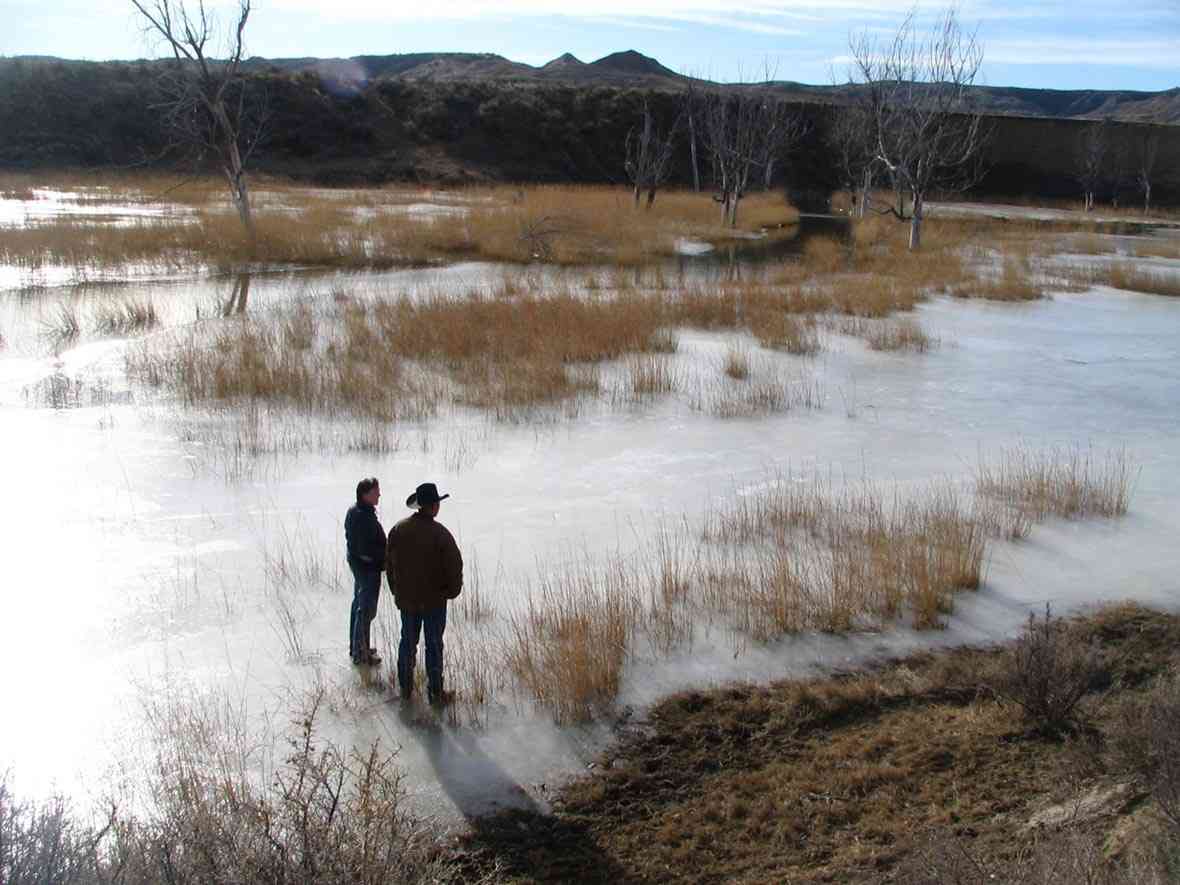
Beneficial use
The coal-bed methane play also might not have burned as brightly as it did without a key decision by the state regarding water.
In the Powder River Basin, coal beds are also important aquifers. Producing methane from coal seams requires pumping water—a lot of water—from the coal aquifer. The appeal of coal-bed methane was that it could be produced cheaply. So the prospect of re-injecting the produced water or otherwise managing large volumes of it at the surface would have made the play uneconomic for most operators. By far the cheapest option was to simply dump the produced water—untreated and highly saline—onto the already saline surface.
Suddenly there was a lot of salty water flowing on a landscape that receives little rain and snowmelt each year. It resulted in salt loading that challenged existing grasses and created havoc for some agricultural operations.
Surface discharge of groundwater requires a permit from the state, which usually deems such surface discharge as a beneficial use of the water. Initial efforts by the state to address the concern of saline coal-bed methane water at the surface characterized the new abundance of water as a godsend in an arid landscape, for both wildlife and agricultural operations, because animals could drink it.
But many conservation groups and downstream landowners were not satisfied. The state had a remedy: The State Engineer's Office declared the production of coal-bed methane gas a beneficial use of the water. Based on this decision, the state continued the practice of approving coal-bed methane water-producing wells and surface-water discharge permits as quickly as possible to help aid the boom-pace demand for drilling and production.
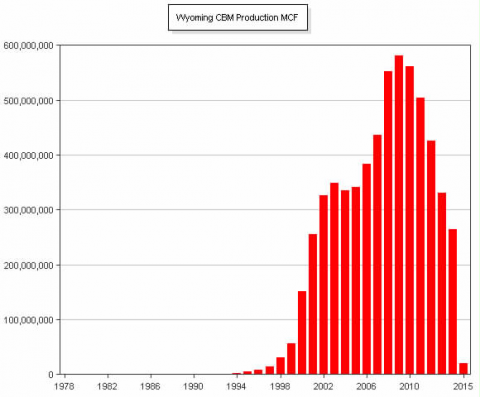
The state’s beneficial use stance didn’t end the fight over surface discharge of coal-bed methane water, however. But it did allow the practice to continue while challenges to it were tied up in the courts and in state administrative hearings. Chief among these was the division of water quality versus water quantity—considerations divided between two state departments.
Nearly 10 years after the Wyoming beneficial use proclamation, the State Engineer’s Office was forced to place a water-to-gas ratio cap on surface discharges. A review by the Wyoming State Geological Survey had revealed that 1,000 or more coal-bed methane gas wells had produced water for years with little or no gas production.
The bust
By the early 2000s, the Powder River Basin coal-bed methane play was in full boom mode, with companies drilling 3,000 new wells per year.
By then, however, a big change for the oil and gas industry was well underway in the Jonah Field in the western part of the state.
Casper-based businessmen Mick McMurry and John Martin had bought leases south of Pinedale where international oil and gas players had already discovered huge amounts of deep natural gas, but had given up on producing it because it was locked in scattered deposits in an ancient, braided streambed. Starting in the 1990s, the two used important new technologies—hydraulic fracturing and directional drilling—to tap the gas.
News of their success spread through the industry like wildfire in the 2000s. Soon, the technologies of companies like Schlumberger and Halliburton—which had its largest hydraulic fracturing division firmly planted in Wyoming in the early 2000s—were in urgent demand throughout North America.
The world’s largest oil and natural gas players took advantage of these technologies to unlock known gas reserves throughout the southern and eastern United States. The boom flooded the North American gas market—and squeezed out the Powder River Basin’s marginally profitable coal-bed methane gas.
From 1998 through 2008, during the Powder River Basin drilling boom, natural gas prices averaged $6 per thousand cubic feet (mcf), with a peak near $15 per mcf. But after 2008 prices for Powder River Basin coal-bed methane fell below $4 per mcf and never recovered.
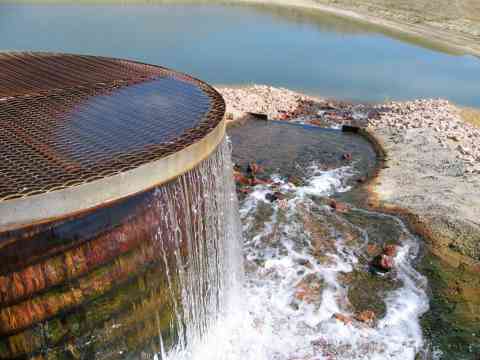
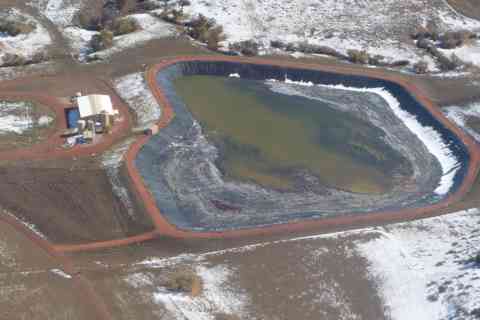
The big players in the Powder River Basin were protected by their holdings in new, more lucrative plays throughout the country, and their drilling budgets followed the geographic shift. Major operators such as Anadarko and Williams gradually slowed their Powder River Basin operations and/or sold their coal-bed methane assets to smaller companies. Operators such as Patriot Energy Resources, High Plains Gas, USA Exploration & Production and many others, acquired large numbers of coal-bed methane gas wells, hoping to weather market conditions and resume production one day.
Their bets proved costly. Thousands of coal-bed methane gas wells were left idle and unmaintained. As the smaller companies worked desperately to acquire investors to revive wells, penalties, fees, taxes and unpaid royalties were adding up.
It became apparent that bankruptcies would result in thousands of wells left orphaned, and the bonds posted by the operators were woefully inadequate to cover the cost of plugging and reclamation. For example, in 2014 the Wyoming Oil and Gas Conservation Commission sought $6.6 million in additional bonding from High Plains Gas CEO Ed Presley to cover the liability of some 2,000 wells. Already $50 million in debt, Presley couldn’t meet the higher bond requirement so the state took control of the wells, adding them to its orphan well cleanup effort.
Today there are approximately 3,000 orphaned coal-bed methane gas wells in the Powder River Basin. It will take many years to plug and reclaim them, at a cost of tens of millions of dollars. Money for the cleanup effort comes from the state’s orphan well fund, which is paid for through a mill levy, or conservation tax, divided among all state oil and gas producers.
Water damage, property right infringements, unpaid taxes and royalties and abandoned wells—all were outcomes that landowner advocacy groups had warned about at the onset of the boom. The strife did drive reformation of Wyoming’s split-estate laws in an attempt to offer better protections for landowners. However, the reformations didn’t go nearly far enough, according to one local landowner advocacy group. Today, in the face of a new oil boom, landowners are petitioning the state to institute a list of mitigation measures to protect residents from flaring, emissions, noise, dust and other nuisances stemming from oil and gas activities.
Editor's Note: We extend special thanks to the University of Wyoming’s School of Energy Resources for support for this and other articles in an ongoing series on the history of Wyoming’s energy and extraction businesses.
Resources
- Amoco Production Co. v Southern Ute Indian Tribe, 526 U.S. 865 (1999). Accessed March 27, 2015 at https://scholar.google.com/scholar_case?case=6547910688631338086&hl=en&as_sdt=6,51.
- Bleizeffer, Dustin. “Broke, out-of-compliance CBM operator asks for another chance.” WyoFile, July 12, 2014. Accessed March 27, 2015 at http://www.wyofile.com/blog/broke-compliance-cbm-operator-asks-another-chance/
- ______________. “CBM: Bugs vs. Bankruptcy. WyoFile, Jan. 11, 2011. Accessed March 27, 2015 at http://www.wyofile.com/cbm-bugs-vs-bankruptcy/.
- ______________. “Early Pioneers; Duo helps launch billion-dollar industry.” Gillette News-Record, May 7, 2000.
- ______________. “Legal opinion stirs CBM water debate.” Casper Star-Tribune, May 10, 2006. Accessed March 27, 2015 at http://trib.com/news/state-and-regional/legal-opinion-stirs-cbm-water-debate/article_4d61866b-d5ce-5748-a6ad-f58669bbc3f8.html
- ______________. “Pressure’s on to modify CBM water regs." Casper Star-Tribune, Dec. 3, 2009. Accessed March 27, 2015 at http://trib.com/news/state-and-regional/pressure-s-on-to-modify-cbm-water-regs/article_ac84adb6-3f03-5ee6-af92-ee5aa146207f.html
- ______________. “Progress slow for Landry well,” Casper Star-Tribune, Oct. 19, 2003.
- Accessed March 27, 2015 at http://trib.com/news/state-and-regional/couple-to-get-new-water-well/article_9582e75f-4d3a-5922-ba0f-a2e38afe572d.html.
- “Gases oust Wyoming residents from homes,” Associated Press, June 4, 1987. Accessed March 27, 2015 at http://www.nytimes.com/1987/06/04/us/gases-oust-wyoming-residents-from-homes.html.
- Kemp, Harold. “Go Blue! State land is the operator’s choice.” Letter, Wyoming Office of State Lands and Investments, Nov. 18, 1999.
- Kloor, Keith. “Powder Keg.” Audubon Magazine, 2002.
- Nussbaum, Paul. “Coal builds a neighborhood, then destroys it.” Philadelphia Inquirer, Aug. 18, 1987. Accessed March 27, 2015 at http://articles.philly.com/1987-08-18/news/26170850_1_hydrogen-sulfide-coal-miners-methane
- Southern Ute Indian Tribe v. Amoco Production Co., 119 F.3d 816 (1997). Accessed March 27, 2015 at https://scholar.google.com/scholar_case?case=424801367377958960&q=Amoco+Production+Co.+v.+Southern+Ute+Indian+Tribe&hl=en&as_sdt=6,51&as_vis=1
- U.S. Bureau of Land Management. “Record of Decision and Resource Management Plan Amendments for the Powder River Basin Oil and Gas Project.” April 2003. Accessed March 27, 2015 at http://www.oilandgasbmps.org/docs/WY035-PowderRiverBasinRecordofDecision....
Illustrations
- The aerial photo is from Ecoflight, the coal-bed methane production graph is from the Wyoming Oil and Gas Conservation Commission and the well diagram is from the Wyoming State Geological Survey. Used with thanks. All other photos are by the author, and are also used with thanks.
